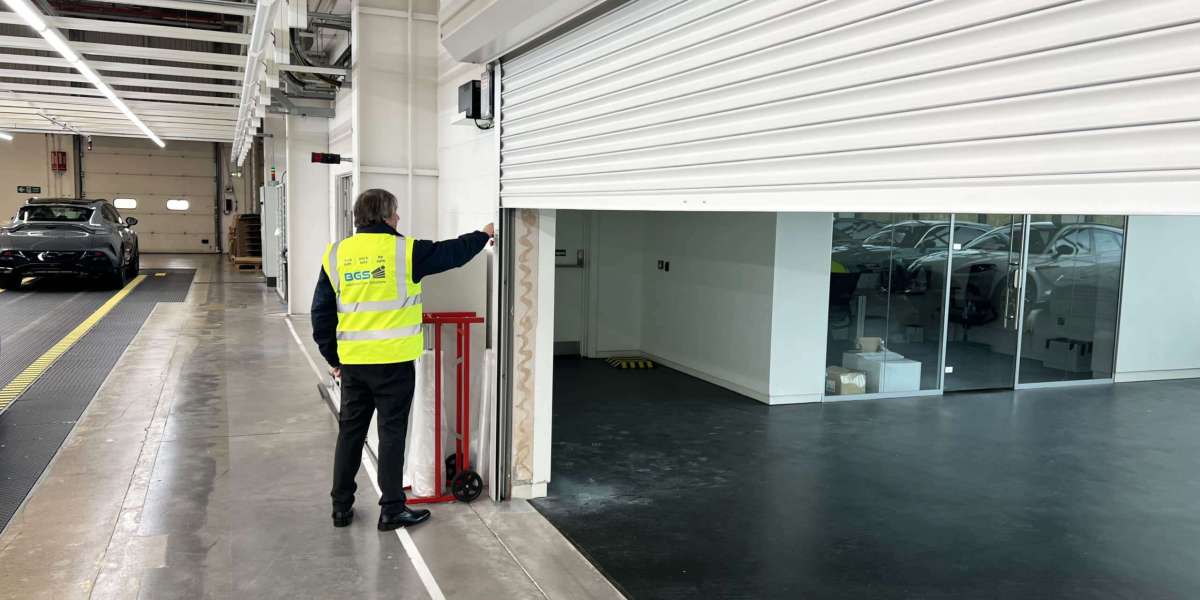In this blog, we'll analyze the pros and cons of roller shutter doors compared to sectional and sliding doors, helping you make an informed decision for your business.
Roller Shutter Doors
Pros
Space Efficiency: Roller shutter doors operate vertically, which means they take up minimal space when opened. This feature is particularly beneficial in areas where floor space is at a premium, such as warehouses and loading docks.
Security: Made from sturdy materials, roller shutter doors offer high levels of security. Their design makes it difficult for intruders to break in, providing peace of mind for businesses storing valuable goods.
Weather Resistance: Many roller shutter doors are designed to withstand harsh weather conditions. They can be insulated to help regulate indoor temperatures, reducing energy costs and maintaining a comfortable environment.
Versatile Applications: Roller shutter doors are suitable for various environments, including retail stores, warehouses, and factories. They can also be customized in terms of size, color, and material to fit specific needs.
Cons
Initial Cost: The initial investment for roller shutter doors can be higher than other types of industrial doors, such as sectional or sliding doors. However, the long-term benefits often outweigh the upfront costs.
Maintenance: Regular maintenance is essential to ensure the smooth operation of roller shutter doors. While they are generally durable, components like springs and motors may require periodic servicing.
Noise Levels: When opening or closing, roller shutter doors can be noisier than sliding or sectional doors. This might be a consideration in quieter environments.
Sectional Doors
Pros
Insulation: Sectional doors are typically designed with insulated panels that provide excellent thermal efficiency. This makes them ideal for climate-controlled environments, such as food storage or pharmaceutical facilities.
Aesthetic Appeal: With various designs and finishes available, sectional doors can enhance the overall appearance of a building. This is especially important for businesses looking to maintain a professional image.
Security Features: Like roller shutters, sectional doors offer good security features, including robust locking mechanisms and the option for automatic operation.
Cons
Space Requirements: Sectional doors require more horizontal space when opened compared to roller shutter doors. This can be a disadvantage in tight spaces or where ceiling height is limited.
Higher Maintenance Needs: Sectional doors have more moving parts than roller shutters, which may require more frequent maintenance to keep them operating smoothly.
Cost: Depending on the features and materials, sectional doors can also be expensive. Their initial cost, combined with maintenance expenses, may lead to a higher total cost of ownership.
Sliding Doors
Pros
Space-Saving Design: Sliding doors do not swing open like traditional doors, making them ideal for locations where space is limited. They can be particularly useful in crowded environments.
Easy Operation: Sliding doors are generally easy to operate, requiring less physical effort than some other door types. Many models also come with automatic opening features for added convenience.
Cost-Effective: In many cases, sliding doors can be more budget-friendly than roller shutters and sectional doors, especially when considering installation costs.
Cons
Security Concerns: Sliding doors may not offer the same level of security as roller shutter or sectional doors. Depending on the design, they can be more vulnerable to break-ins.
Weather Resistance: While some sliding doors are designed for outdoor use, they may not provide the same level of weather resistance as roller shutter doors, which can lead to issues in extreme weather conditions.
Limited Insulation: Sliding doors generally offer less insulation than sectional doors, which could be a concern for temperature-sensitive environments.
Conclusion
Choosing the right industrial door for your business depends on various factors, including security needs, space limitations, and insulation requirements. Roller shutter doors provide excellent space efficiency and security, making them a popular choice for many industries. Sectional doors excel in thermal insulation and aesthetic appeal, while sliding doors offer practicality and cost-effectiveness.
When deciding on the best option, consider your specific operational needs and consult with professionals who can provide insights tailored to your situation. For those looking to enhance security and efficiency, roller shutter doors Leeds may be the ideal solution.
At BGS, we offer a wide range of industrial doors, including roller shutters, sectional doors, and sliding doors. Contact us today to learn more about how we can help you choose the best door solution for your business!



